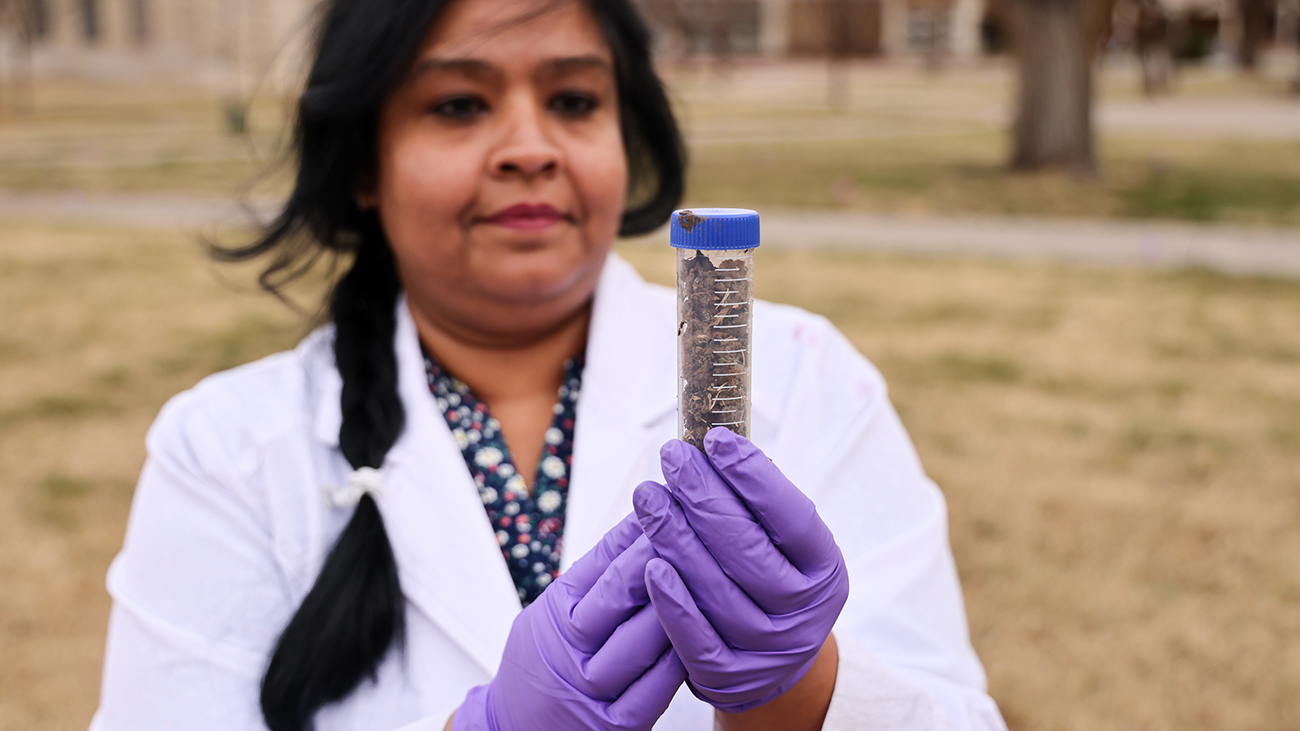- Community
- Research
- Science
- Featured
WT Joins Tiny Earth Initiative in Effort to Increase Hands-On Learning in Labs
Copy by Chip Chandler, 806-651-2124, cchandler@wtamu.edu
CANYON, Texas — West Texas A&M University students next fall will join a global effort to find new antibiotics as part of an innovative way of teaching microbiology.
WT has joined the teaching initiative Tiny Earth, in which traditional laboratory experiences in introductory science classes are converted into discovery-based research exercises.
“Most science-class laboratories are based on the traditional concepts of curriculum, which is important,” said Dr. Maitreyee Mukherjee, assistant professor of biology in the Department of Life, Earth and Environmental Sciences in WT’s Paul Engler College of Agriculture and Natural Sciences. “But adopting the Tiny Earth curriculum will enhance that experience by incorporating research-based laboratory experiences.”
Students in Mukherjee’s microbiology class will dig their own soil samples around the WT campus and the Texas Panhandle, then spend the semester analyzing their samples — “everything they normally do in a microbiology lab, just in the framework of doing research,” Mukherjee said.
Students will be introduced to cutting-edge molecular methods, DNA sequencing and bioinformatics techniques, in addition to traditional methods they usually learn in a microbiology lab, Mukherjee said.
WT students, like all Tiny Earth participants, will attempt to discover new antibiotics from soil that’s teeming with microorganisms—perhaps 10 billion per gram of soil, Mukherjee said.
“Many of them produce antibiotics naturally,” Mukherjee said. “A lot of the antibiotics currently in use have been discovered in a similar fashion, but we don’t do that anymore. Not many new antibiotics have been discovered in the last 30 years because there’s less profit in discovering new ones.”
But that has helped contribute to a looming crisis: Harmful bacteria in humans is becoming more resistant to the drugs designed to kill it, and infections are becoming difficult, if not impossible, to treat.
“Our students will have the opportunity to actively add to the body of knowledge we need to be able to combat the global issue of reduced drug effectiveness,” Mukherjee said. “This innovative program will raise WT’s national visibility and standing, will attract students who are looking for the opportunity to engage in hands-on research, and has the potential to increase external funding.”
Tiny Earth was created by Dr. Jo Handelsman, Vilas Research Professor of Plant Pathology at the University of Wisconsin-Madison and former Associate Director for Science at the White House Office of Science and Technology Policy. She initially founded a course at Yale University in 2012 to address both the antibiotic crisis and the shortage of science trainees, which later evolved into the Tiny Earth initiative.
By taking part in the initiative, microbes discovered in soil from the WT campus will be cataloged in the Tiny Earth database, helping create a robust repository of potential antibiotic sources.
The Tiny Earth initiative is an example of WT’s work as a regional research university, the primary mission of the University’s long-range plan, WT 125: From the Panhandle to the World.
That plan is fueled by the historic, $125 million One West comprehensive fundraising campaign. To date, the five-year campaign — which publicly launched in September 2021 — has raised more than $120 million.
About West Texas A&M University
WT is located in Canyon, Texas, on a 342-acre residential campus. Established in 1910, the University has been part of The Texas A&M University System since 1990. WT, a Hispanic Serving Institution since 2016, boasts an enrollment of about 10,000 and offers 59 undergraduate degree programs and more than 40 graduate degrees, including two doctoral degrees. The University is also home to the Panhandle-Plains Historical Museum, the largest history museum in the state and the home of one of the Southwest’s finest art collections. The Buffaloes are a member of the NCAA Division II Lone Star Conference and offers 14 men’s and women’s athletics programs.
—WT—

